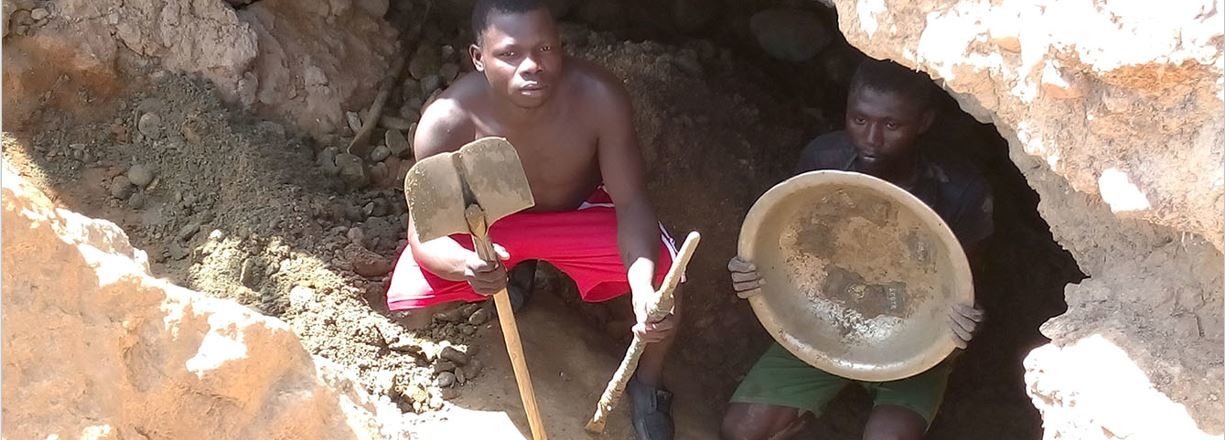Produced in Partnership with the Artisanal Mining and Property Rights Project (AMPR)
Executive Summary
This report presents an analysis of the artisanal mining sector in western Central African Republic (CAR) and outlines some of the challenges surrounding gold and diamond mining, trade and export.
From April to July 2019, the International Peace Information Service (IPIS), in partnership with national authorities, carried out a mapping of artisanal mining sites in western CAR. A total of 322 sites were visited in 7 prefectures. Of these, 201 exclusively mined gold, 61 exclusively mined diamonds and 60 mined both gold and diamonds.
In total, the population of workers actively involved in such minerals production was estimated at 62,042 individuals, 28% of whom are women. The study found an average (mean) of around 193 workers per site (median 77). Children under 15 years of age actively involved in production accounted for 11% of workers. IPIS conservatively estimates the total number of workers on mining sites throughout the country to be made up of between 150,000 and 200,000 individuals.
Artisanal mining is a particularly dangerous activity. Eighty-seven people were reported to have died at 42 sites in the 12 months prior to study team site visits, with 1,154 people reported injured at 116 sites in the same period. In addition, 33% of all 322 sites have been the scene of conflict in the last 12 months. In 80% of these 105 cases, such conflict was directly related to mining.
The total weekly production from the 261 gold sites visited amounted to over 35,700 grams in the week preceding the study team visit. Using this figure as a baseline, IPIS estimates the potential annual production from all gold sites in the CAR to be approximately 5,720 kilograms of gold. This estimate does not take into account possible loss of volume through gold purification mechanisms in artisanal smelters prior to export. Nevertheless, the production officially recorded in 2018 would still represent only 2.5% of the country’s potential production.
Total weekly production from the 121 diamond sites visited amounts to 195.8 carats in the week preceding the study team visit. On this basis, IPIS estimates the potential annual production from all diamond sites in the CAR could be approximately 187,000 carats. The production officially recorded in 2018 would then represent only 7.3% of the country’s potential production.
IPIS estimates the minimum income of a worker on both gold and diamond sites to be between USD 9.45 (median) and USD 11.77 (mean) for a 5.5-day working week. This report demonstrates that pre-financing mechanisms play a key role in determining the income of miners on sites. However, the collapse of the formal sector, particularly in diamond mining, has had a significant impact on diggers’ standards of living. As gold sites offer greater predictability of yield, we have seen an increase in both
production and the number of artisanal gold diggers in the CAR in recent years.
Mining in the CAR continues to be characterized by informality and fraud. Over a third (116 sites) of all the sites visited as part of the present sample cited Cameroon as the main destination for their minerals production. The quantity of minerals produced and exported is especially difficult to monitor as production is only recorded on 33.5% of sites (both formally or informally). The absence of mining administration representatives and purchasing offices near mine sites is cited as the main reason for the export of minerals to Cameroon, with no benefit to Central African communities.


